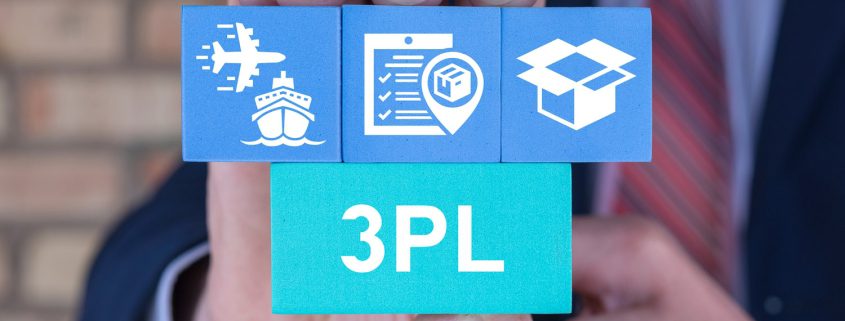Key 3PL Practices to Promote Quality Assurance
According to the American Society for Quality, poor quality in the supply chain costs approximately 15% of revenue annually, resulting in billions of dollars in losses for U.S. companies.
For shippers, maintaining quality within their own operations is challenging. The stakes are even higher when companies outsource supply chain management to third-party logistics providers (3PLs). There are numerous potential failure points in storing, packaging, and transporting products.
Shippers are increasingly emphasizing quality assurance practices when evaluating 3PL partners. The way a logistics provider manages quality—from mitigating risks to resolving errors—is crucial. Quality issues impact not just revenue but also a company’s reputation, regulatory compliance, and operational efficiency.
The famous quote goes, “Quality is never an accident; it is always the result of intelligent efforts.” Here are five key practices that logistics providers use to make quality assurance a cornerstone of their operations.
Root Cause Analysis: Identifying Issues at the Source
Problems are inevitable. Root cause analysis helps 3PLs address issues at their origin to prevent recurrence. The goal is to identify and eliminate the true cause of a problem rather than applying temporary fixes. This analysis reduces waste, errors, defects, and costs while improving customer satisfaction, safety, and compliance.
Common methods for root cause analysis include the 5 Whys and the 6M approach. The 5 Whys technique involves defining a problem and asking “why” five times to narrow down the root cause. It is effective for simple, linear problems but may not suffice for complex issues. The 6M method, which involves creating a cause-and-effect diagram from six focus areas (measurement, material, machine, mother nature (environment), manpower, and method), is suitable for more complicated challenges.
Logistics providers need an established process for investigating and resolving issues promptly. This practice should be proactive, continuously seeking out areas for improvement.
Technology Integration: Leveraging Innovation for Quality Assurance
Technology is essential for quality assurance, ensuring data integrity, and promoting automation, visibility, and compliance. Effective use of technology helps 3PLs optimize QA processes to control costs, minimize risks, and meet customer needs.
Logistics providers focusing on QA implement robust quality management systems (QMS).
A QMS does more than document procedures and responsibilities; it promotes process standardization by applying consistent information, methods, skills, and controls across operations. Centralized process documentation also facilitates staff training to ensure consistency.
AI and robotics are increasingly popular for quality assurance. 3PLs use AI to improve route and inventory management, automate quality control, and develop more accurate demand forecasting. Robotics help eliminate human errors, automating material handling, picking and packing, and quality inspections to enhance efficiency and accuracy.
Training and Staffing: Investing in Talent and Expertise
Quality assurance is about people as much as it is about processes. Quality-driven 3PLs invest heavily in rigorous staff vetting and comprehensive training. Staff education is an ongoing effort to enhance skills and ensure compliance, covering safety protocols, operational procedures, regulatory requirements, and customer conditions. Continuous training empowers teams to effectively spot and resolve issues.
Ongoing training fosters a culture of quality. By developing staff around quality assurance practices, companies can meet the highest standards and embrace continuous improvement when issues arise.
Certifications: Demonstrating Commitment to Quality Standards
Certifications are tangible proof of a 3PL’s commitment to quality management practices. They outline how companies establish, implement, maintain, and improve their QMS. The ISO 9001:2015 certification is a prevailing standard for business quality assurance. Logistics providers with this certification have effective QA processes and trained staff to execute best practices.
For 3PLs working in the pharmaceutical industry, compliance with Good Manufacturing and Distribution Practices (cGMP and cGDP) is critical to ensure patient safety for life-saving treatments throughout the supply chain. The FDA’s cGMP standards ensure proper design, monitoring, and control over processes and facilities, protecting drug quality throughout the supply chain. Compliance involves specific process and facility design, regular external audits, rigorous record-keeping, and strict regulatory adherence.
Risk Management Processes: Mitigating Potential Challenges
In logistics, problems can arise at any moment. Contingency plans must be in place for realistic threats, such as cyberattacks, weather events, infrastructure failures, terrorism, and pandemics. Quality assurance involves proactive risk identification and vulnerability assessment.
By anticipating catalysts for quality issues, such as equipment failures or supplier disruptions, 3PLs can minimize operational impact. Business continuity plans ensure operations continue despite disruptions. Logistics providers develop continuity and disaster recovery procedures, define alternate routes and warehouses, and prepare emergency communication protocols to protect quality without interruption.
Euro American Worldwide Logistics: Quality Assured
At Euro American Worldwide Logistics, quality assurance is integral to our operations. From the frontline to the executive level, everyone prioritizes quality. We are ISO 9001:2015-certified, implement leading-edge QA technology, and employ a premier QA team. Our culture actively pursues continuous improvement to control quality and enhance customer satisfaction.



